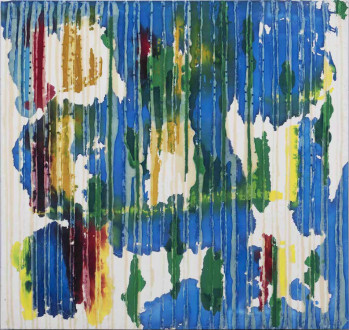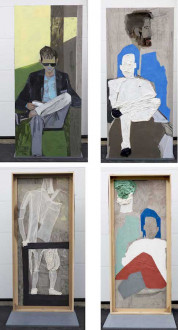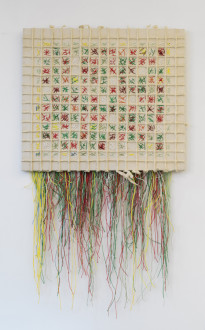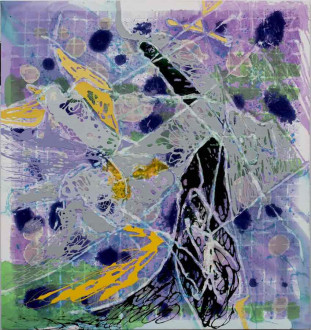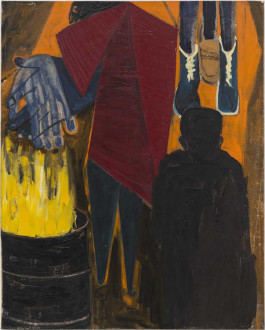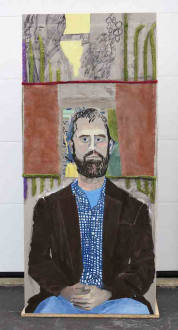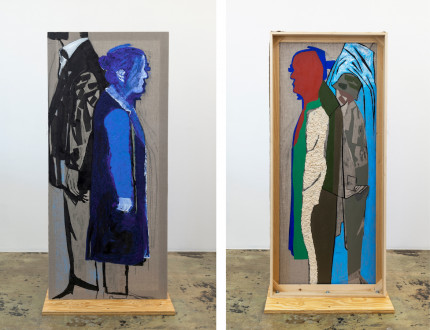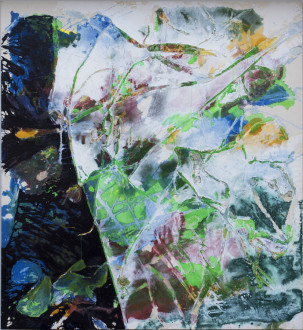models stand close to the paintings (Works)
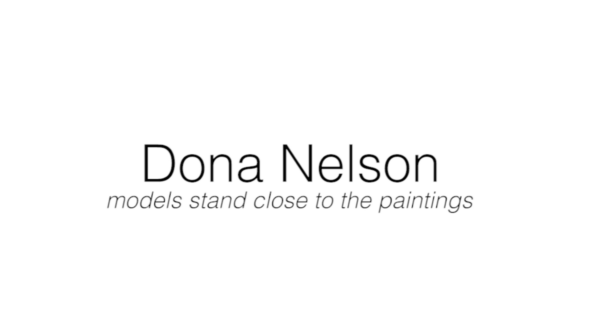
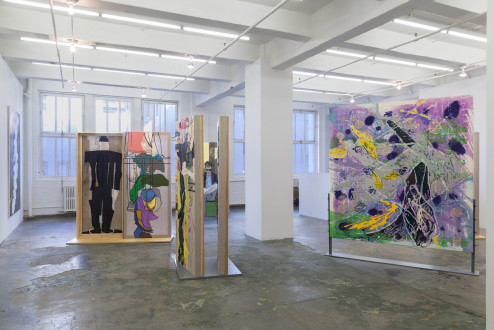
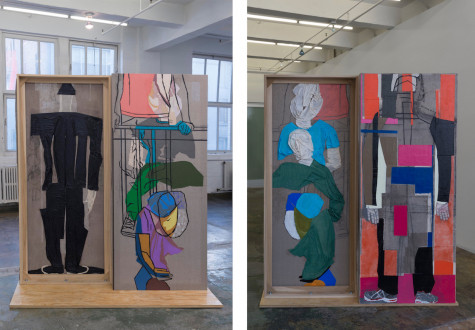
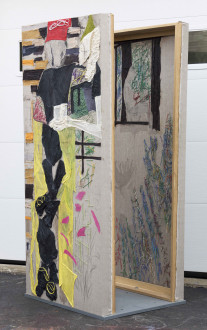
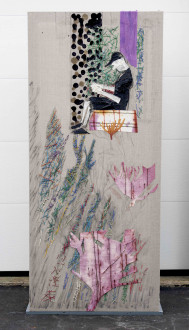
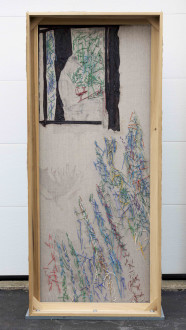
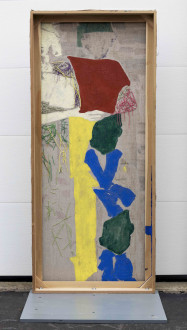
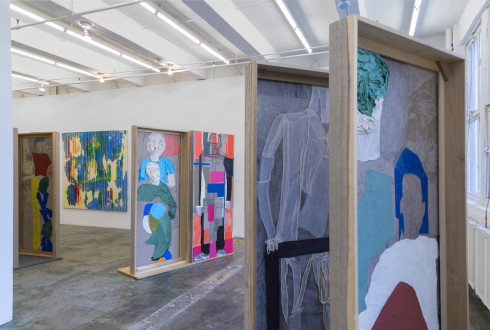
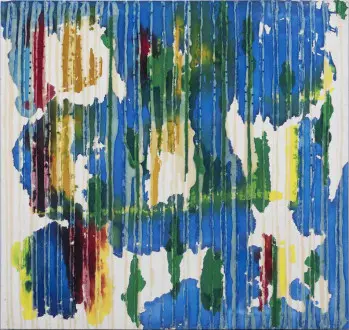 309, 2016. Acrylic and acrylic mediums on canvas, 83 x 79 in.">
309, 2016. Acrylic and acrylic mediums on canvas, 83 x 79 in.">
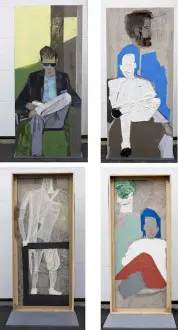 Passengers, 2016. Collage, dyed cheesecloth, muslin, and acrylic mediums on linen panel mounted on plywood base, panel: 81.5 x 36 in, base: 38 x 32 in.">
Passengers, 2016. Collage, dyed cheesecloth, muslin, and acrylic mediums on linen panel mounted on plywood base, panel: 81.5 x 36 in, base: 38 x 32 in.">
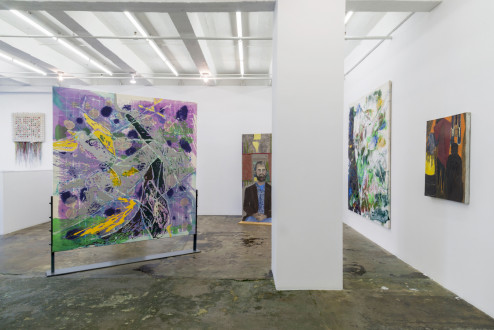
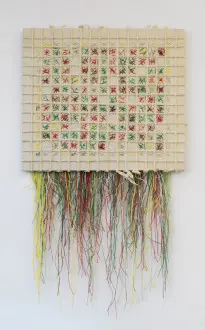 Hägar, 2017. Painted string and cheesecloth on canvas, 31 x 35 in.">
Hägar, 2017. Painted string and cheesecloth on canvas, 31 x 35 in.">
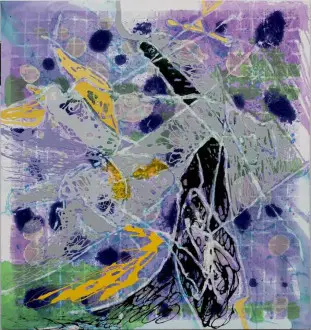 Lavender Lion, 2016. Acrylic and acrylic mediums on canvas, 82.5 x 77.5 in.">
Lavender Lion, 2016. Acrylic and acrylic mediums on canvas, 82.5 x 77.5 in.">
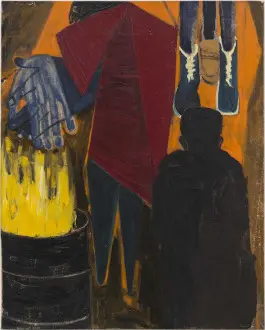 Cold Busy Street, 1984. Oil on canvas, 39.5 x 36.5 in.">
Cold Busy Street, 1984. Oil on canvas, 39.5 x 36.5 in.">
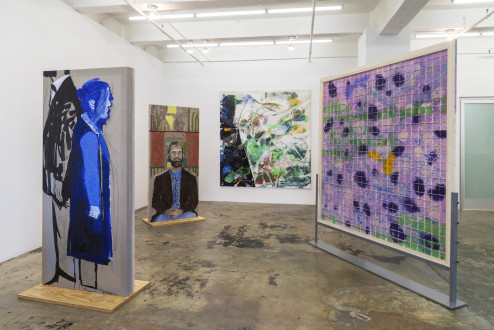
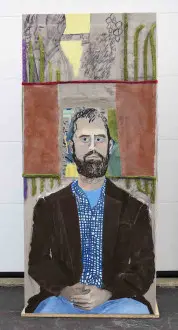 Autumn Andrew, 2016. Collage, dyed cheesecloth, muslin, and acrylic mediums on linen panel mounted on plywood base, panel: 81.5 x 36 in, base: 38 x 23 in.">
Autumn Andrew, 2016. Collage, dyed cheesecloth, muslin, and acrylic mediums on linen panel mounted on plywood base, panel: 81.5 x 36 in, base: 38 x 23 in.">
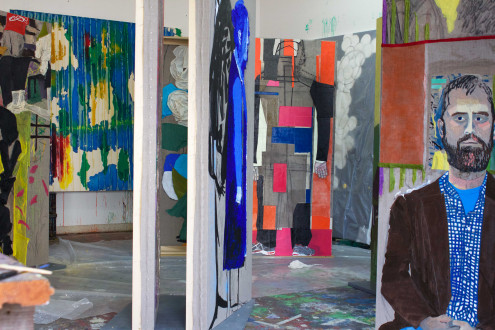
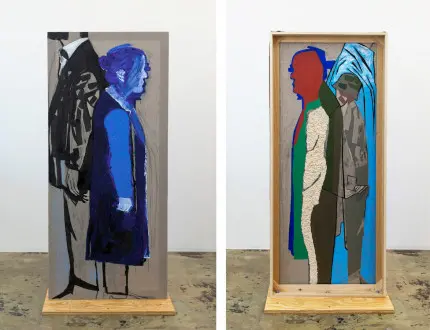 Mountain Passengers, 2017. Collage, dyed cheesecloth, muslin, and acrylic mediums on linen mounted on plywood base, panel: 81.5 x 36 in, base: 38 x 23 in.">
Mountain Passengers, 2017. Collage, dyed cheesecloth, muslin, and acrylic mediums on linen mounted on plywood base, panel: 81.5 x 36 in, base: 38 x 23 in.">
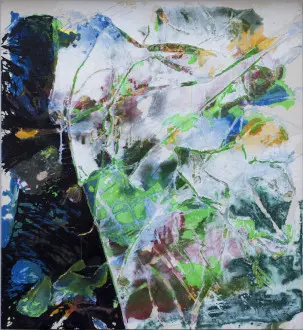 Magdelena Lane, 2016. Acrylic and acrylic mediums on canvas, 93 x 84.5 in.">
Magdelena Lane, 2016. Acrylic and acrylic mediums on canvas, 93 x 84.5 in.">
Selected Works
Dona Nelson
Thursday, March 23, 2017, 6 - 8:30 pm.
models stand close to the paintings Press Release
Thomas Erben Gallery is pleased to announce models stand close to the paintings, an exhibition of new constructed paintings by Dona Nelson. Praised for her two-sided canvases that incorporate a wide range of techniques and materials, Nelson has established herself as an artist committed to thoroughly exploring the unfolding possibilities of her practice, wherever they may lead. The exhibition features a series of new freestanding works, in which Nelson has attached two paintings to a square base in parallel. These “boxes” are exhibited in front of a selection of works hanging on the walls, including older pieces from Nelson’s career that contextualize this culmination of her processes.
Nelson is well-regarded for her radical originality with her double-sided paintings, in which she plays with the stains that bleed through the canvas. In these works, Nelson’s process reveals the two picture plains as fundamentally and materially interdependent. For the new constructions, however, Nelson has doubled down on this process by assembling two double-sided paintings to face one another. In each of these canvases, figures appear enveloped by a variety of processes and materials. In By the Yard, for instance, a man is seated with arms outstretched, as if holding a book. The smooth surface of his black clothing is in contrast to both the rough untreated linen, as well as the colored thread and dotted paint that run through the surface. Due to the design of the base, the rear of the opposite painting is seen behind the person, where flat planes of colored paint produce a loosely articulated second figure.
Informed, but not limited, by the conventions of painting as a medium, Nelson’s process-based work has often defied the dichotomy of figuration and abstraction. In the 1980s Nelson began incorporating figuration into her practice, as seen in a work like Street (1985). Here, a black and yellow ground darkens as it recedes into the distance, and a mixture of figures rendered in roughly textured strokes stand around one man, his palm facing out. In a work from the 90s, Rock Avenue (1997), Nelson’s incorporation of figuration and abstraction is more spare and playful. Set against a dark backdrop, a constellation of white cloud-like circles spans the height of the canvas. Thin line work suggests a female hairdo, a cinched waist, a flared dress – a figurative presence that appears and disappears with focus.
As a title, models stand close to the paintings refers to the 1951 spread of Jackson Pollock’s works in Vogue. In these iconic images, models pose in front of his paintings, which become a stylized backdrop. Nelson’s paintings stand in response to this moment, questioning the position of painting and asserting its essential values. Her contributions become independent figures, positioned as if agents in this conversation. In the reintroduction of figuration, Nelson’s inventiveness comes full circle, linking together the panoply of ideas and processes developed throughout her career. Fittingly, Zachary Rawe concludes in his essay Wild Messiness accompanying the exhibition: “These are uncompromising works…. and perhaps, most broadly these are works that fantasize a form of painting and a form of life that, wildly, cannot—or will not—be dictated by a single form.”
Dona Nelson (b. 1947, Great Island, NE) moved to New York City in 1967 to participate in the Whitney Independent Study Program, and received her BFA from Ohio State University in 1968. Nelson has had numerous, widely reviewed solo shows, at galleries such as Rosa Esman, Michael Klein and Cheim & Read (all New York); including a large survey of her work at the Weatherspoon Museum of Fine Art (Greensboro, North Carolina). She has also been featured in many group exhibitions throughout the country, including the 2013 Whitney Biennial, and has been written about in the New York Times, The New Yorker, Art in America and ArtForum. Her work has appeared at institutions such as the Contemporary Arts Museum Houston, New York University’s 80WSE, Bard College, Apexart, the Milwaukee Art Museum, and the Aldrich Museum, and is included in the collections of the Metropolitan Museum of Art, Boston Museum of Fine Arts, Art Gallery of New South Wales, Guggenheim Museum, Rose Art Museum and the Pennsylvania Academy of Fine Arts – among others. Nelson was a recipient of a 2011 grant from the Foundation for the Community of Artists, 2013 Artists’ Legacy Foundation Grant, 2015 Anonymous was a Woman Grant, and received a Guggenheim Fellowship in 1994. She has been a professor for twenty-five years at Tyler School of Art, Temple University, Philadelphia, also serving as a visiting critic in the M.F.A. program at Yale School of Art and the Bard Summer M.F.A. Program. This is Nelson’s fifth exhibition with the gallery.
Reviews
Reviews
- Smith, Roberta. Dona Nelson, The New York Times, May 12, 2017 | Download PDF | 223.38 KB
- Wolin, Joseph. Dona Nelson, Time Out, April 25, 2017 | Download PDF | 614.83 KB
- Pardee, Hearne. Shared Spaces: Dona Nelson Brings Back the Figure, artcritical, April 20, 2017 | Download PDF | 961.97 KB
- Hughes, Milree. Transubstantial, Culture Catch, April 17, 2017 | Download PDF | 1.71 MB
- Rodney, Seph. Collaged Paintings with Presence, Hyperallergic, April 14, 2017 | Download PDF | 1,000.10 KB
- Goings on about town, The New Yorker, April 12, 2017 | Download PDF | 14.09 MB
